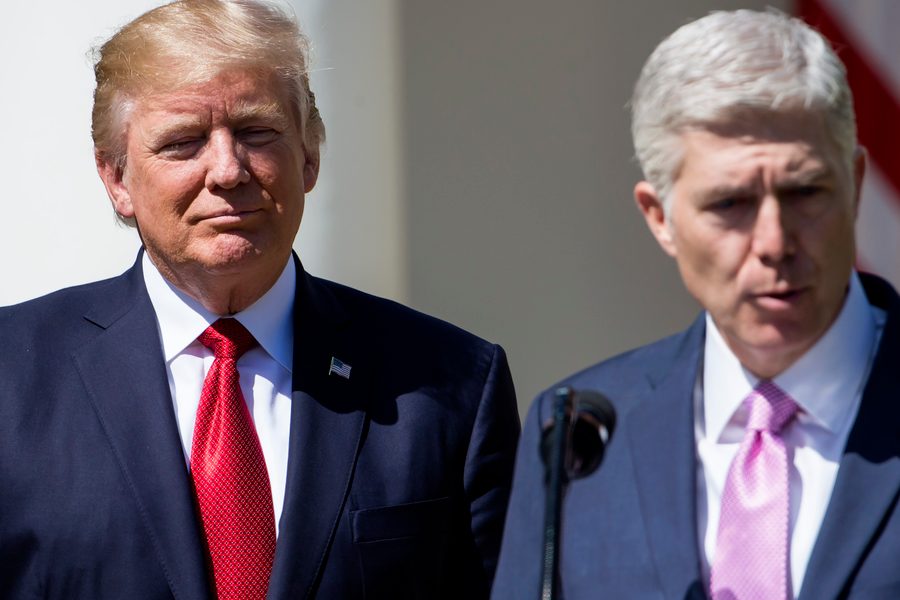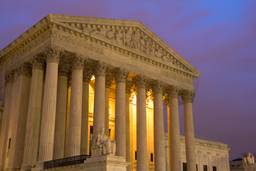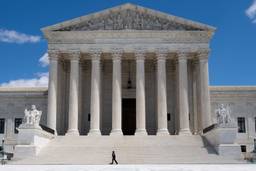Trump’s Justice Department Is Trying to Turn Back the Clock on Workers’ Rights 100 Years
Moshe Z. Marvit

On Monday, the Supreme Court heard oral arguments in a trio of cases, captioned as NLRB v. Murphy Oil, that examined whether management commits an unfair labor practice when it requires employees to sign arbitration agreements that waive their right to wage class-action lawsuits. The question of whether an employee can give up her right to act in concert with other workers may seem technical, but it implicates the very core of collective action.
During the hearing, Trump’s Department of Justice clearly sided with employers, who are calling for significant cutbacks to workers’ rights to take collective action.
The significance of this case was evident throughout the oral arguments. On one side the National Labor Relations Board (NLRB) and a University of Virginia Law Professor argued that the issue implicates the basic employment rights of tens of millions of U.S. workers. On the other side, the Principal Deputy U.S. Solicitor Jeff Wall (“Solicitor”) and an attorney for the companies argued that these are technical issues related to contract and civil procedure.
The case revolves around a key question: Do forced arbitration agreements that ban collective or class legal actions violate Section 7 of the National Labor Relations Act (NLRA)? That section permits employees “to engage in other concerted activities for the purpose of collective bargaining or other mutual aid or protection.”
The employers’ and Solicitor’s position is that Section 7 only protects workers’ rights to get to the “courthouse door.” According to the line of reasoning this side presented in the courtroom, the NLRA gives workers the right to act together at work, but the moment their workplace concerns get to a legal forum, they have no right to continue together. Once they enter the courtroom or arbitrator’s chambers, the argument went, all parties must abide by the rules of the forum, be it the NLRB, the federal courts or the arbitrator. They argued that this principle applies even if those rules require workers to proceed individually.
The problem, of course, is that there is a long history of employers using forced contracts to require employees to waive their rights as a condition of employment.
Justice Ruth Bader Ginsburg invoked this history when she asked the attorney for the employers whether forced arbitration agreements are simply “yellow dog” contracts by another name. This was a reference to contracts where employees agree not to join a union as a condition of employment. (“Yellow dog” contracts were made illegal in the 1932 Norris LaGuardia Act.)
Justice Stephen Breyer put an even finer point on the matter when he expressed his concern that the employers’ position “is overturning labor law that goes back to, for [Franklin D. Roosevelt] at least, the entire heart of the New Deal.”
Nonetheless, the arguments of the management-side attorneys appeared to gain traction with conservative Justices. This iss despite the fact that the employers’ side consistently failed to address a key problem: the rules of the forum that they said everyone has to follow are not made by some neutral third party. They are written by the employer, who then makes participation in the forum a condition of employment for the employee to sign the agreement. Research shows that almost 25 million non-union workers have been forced to sign such arbitration agreements.
Yet, some Justices bought the management-side argument. At one point, Justice Anthony Kennedy, who seemed to be the swing vote in this case, insisted that workers can still engage in collective action because they can simply go to the same attorney and ask her to represent them each individually.
Presumably, Justice Kennedy did not intend to imply that the attorney could share the details of each of the cases with each worker, because that would violate the confidentiality clause in many of these agreements. And presumably, he did not mean that the attorney could share confidential information, because then there would be no attorney-client privilege protection.
The employers’ counsel agreed with Justice Kennedy, and said that even though the confidentiality clause would prohibit the attorney from sharing information among the workers, it couldn’t “stop the same lawyer from thinking about the three cases in conjunction.” In Justice Kennedy’s words, “that is collective action.”
In reality, forced arbitration agreements that prohibit class or collective action have grown exponentially in recent years through a tactical decision by corporations to strip Americans of their rights to litigate their claims together. The NLRB responded in 2012 to the growing use of these forced arbitration agreements by finding that these agreements violate federal labor law.
The liberal Justices repeatedly demonstrated that this case is not about neutral rules of a forum, or technical issues of civil procedure, but about basic concepts of power.
Justice Ginsburg asked the Solicitor, “What about the reality? I think we have in one of these cases, in Ernst & Young, the individual claim is $1,800. To proceed alone in the arbitral forum will cost much more than any potential recovery for one. That’s why this is truly a situation where there is strength in numbers, and that was the core idea of the NLRA. There is strength in numbers. We have to protect the individual worker from being in a situation where he can’t protect his rights.”
Justice Ginsburg was making the point that if workers cannot bring class or collective actions, many who have low-dollar claims will be denied justice because it would be more expensive to bring their cases than they could possibly win.
The Solicitor’s response was telling. He claimed that the different arbitration agreements have different clauses, which deal with issues of costs and fees. In essence, he insisted, the contract takes care of those concerns. And, in the final analysis, the employers’ attorney and Solicitor explained that the contract — even if it is a forced contract — should trump any possible rights workers may have to bring their actions collectively.
In a sense, this position answered Justice Breyer’s initial question: Yes, this case does bring us back to a pre-New Deal framework, and the employers and Trump administration are comfortable with that.
This case is poised to have a far-reaching impact. When the Supreme Court struck down a California law prohibiting consumer arbitration agreements that waive consumers’ rights to file a class action, such arbitration agreements ballooned. If the Court similarly holds that workers do not have a substantive right under the NLRA to vindicate their labor and employment rights collectively, then it is likely that soon almost every non-union worker will face even more limitations to real justice.
Moshe Z. Marvit is an attorney and fellow with The Century Foundation and the co-author (with Richard Kahlenberg) of the book Why Labor Organizing Should be a Civil Right.








